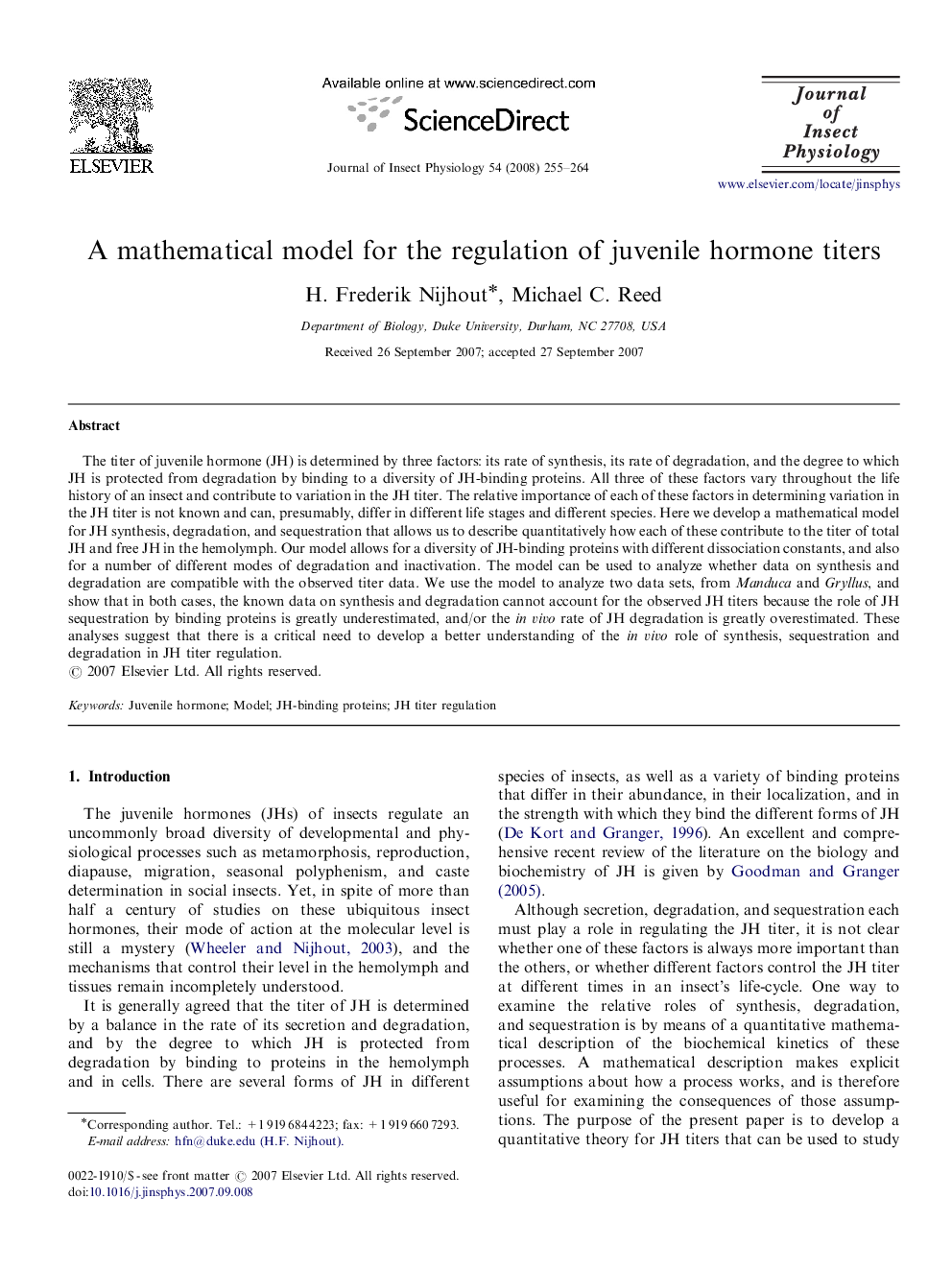| کد مقاله | کد نشریه | سال انتشار | مقاله انگلیسی | نسخه تمام متن |
|---|---|---|---|---|
| 2841436 | 1165397 | 2008 | 10 صفحه PDF | دانلود رایگان |

The titer of juvenile hormone (JH) is determined by three factors: its rate of synthesis, its rate of degradation, and the degree to which JH is protected from degradation by binding to a diversity of JH-binding proteins. All three of these factors vary throughout the life history of an insect and contribute to variation in the JH titer. The relative importance of each of these factors in determining variation in the JH titer is not known and can, presumably, differ in different life stages and different species. Here we develop a mathematical model for JH synthesis, degradation, and sequestration that allows us to describe quantitatively how each of these contribute to the titer of total JH and free JH in the hemolymph. Our model allows for a diversity of JH-binding proteins with different dissociation constants, and also for a number of different modes of degradation and inactivation. The model can be used to analyze whether data on synthesis and degradation are compatible with the observed titer data. We use the model to analyze two data sets, from Manduca and Gryllus, and show that in both cases, the known data on synthesis and degradation cannot account for the observed JH titers because the role of JH sequestration by binding proteins is greatly underestimated, and/or the in vivo rate of JH degradation is greatly overestimated. These analyses suggest that there is a critical need to develop a better understanding of the in vivo role of synthesis, sequestration and degradation in JH titer regulation.
Journal: Journal of Insect Physiology - Volume 54, Issue 1, January 2008, Pages 255–264